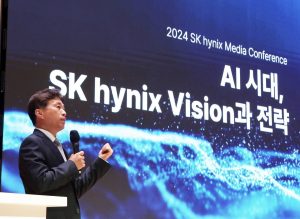Popular Keywords
- About Us
-
Research Report
Research Directory
Semiconductors
LED
Consumer Electronics
Emerging Technologies
- Selected Topics
- Membership
- Price Trends
- Press Center
- News
- Events
- Contact Us
DRAM
News

[News] Decoding CXMT: DDR5 Breakthroughs and What’s Next
As Chinese memory powerhouse CXMT reportedly began mass-producing DDR5 chips in late 2024, a wave of intrigue has surrounded its technological advancements. Despite the tightening grip of U.S. chip controls, the company seems to be breaking through to more cutting-edge processes, leaving the industr...
News

[News] SK Hynix Sets 2024 Record, Surpasses Samsung in Q4 Profit for the First Time
SK hynix announced today that it recorded best-ever yearly performance with 66.1930 trillion won in revenues, 23.5 trillion won in operating profit with an operating margin of 35%, and 19.8 trillion won in net profit with a net margin of 30%. SK hynix’s yearly revenues marked all-time high, exc...
Insights

[Insights] Memory Spot Price Update: Production Cuts Fail to Boost Market as Sellers Struggle with Weak Demand
According to TrendForce's latest memory spot price trend report, regarding DRAM, the spot market has shown a marginal demand increase this week, but transaction prices remain relatively low as buyers are testing the water with low-price inquiries. As for NAND flash, announcements on production cuts ...
News

[News] SK hynix Reportedly Set 1c DRAM Mass Production in Feb, While Samsung Delays by Six Months
Ahead of SK hynix’s upcoming fourth-quarter results announcement, another Korean memory giant, Samsung, may be in trouble again. According to MoneyToday, the company has delayed the development of its 10nm-class sixth-generation (1c) DRAM by another six months, postponing the target date to June, ...
News

[News] Chinese Memory Makers, Led by CXMT, Advance in the DRAM Market, Challenging Samsung, SK Hynix, and Micron
A report from Nikkei highlights that, despite U.S. restrictions, China’s share of the global memory chip market has risen from virtually zero to 5% in just five years. This rapid growth poses challenges to global giants like Samsung Electronics, SK hynix, and Micron. Notably, according to Trend...
- Page 3
- 68 page(s)
- 337 result(s)





